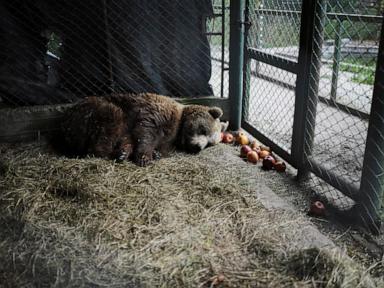Lions, tigers, and bears trapped in deplorable conditions at the now-defunct Lujan Zoo in Argentina are finally receiving much-needed care. On Thursday, veterinary teams began assessing and treating the 62 surviving big cats and two brown bears, marking the first veterinary attention they have received in years. This initiative follows an agreement between the Argentine government and the international animal welfare organization, Four Paws, aimed at relocating these animals to expansive wildlife sanctuaries.
The Lujan Zoo, situated on the outskirts of Buenos Aires, was closed in 2020 due to growing safety concerns, particularly regarding its practices that allowed visitors to interact closely with wild animals. Following the zoo’s closure, the conditions for the animals deteriorated significantly. Over the past five years, a handful of dedicated former zookeepers continued to care for the animals, but tragically, many did not survive due to inadequate nutrition and medical neglect.
When Four Paws first visited the zoo in March 2023, they found only 112 big cats remaining, a sharp decline from the more than 200 that had been housed there when it closed. The organization’s chief program officer, Luciana D’Abramo, described the situation as “shocking,” highlighting the severe overcrowding in cages that measured just 3 meters by 3 meters, containing multiple lions.
Rescue Operations Underway
With the recent agreement struck between Argentina and Four Paws, the organization’s team has taken over the care of the remaining animals. The memorandum of understanding also includes measures to prohibit the sale and private ownership of exotic felines, a significant step toward protecting these species in the country.
Veterinary experts, led by Dr. Amir Khalil, are currently conducting thorough evaluations of each animal. Many lack essential vaccinations and medical histories, complicating their care. They are administering treatments that range from IV fluids for hydration to emergency surgeries for injuries that have gone untreated for far too long.
One tiger, for instance, was treated for a bleeding tail injury, while others underwent procedures for dental issues caused by their environment. The team is working diligently to prepare these animals for their eventual transfer to sanctuaries that offer a more natural habitat, where a single lion would typically have access to 10,000 square meters of space.
As the rescue efforts progress, some former zookeepers express relief and hope for the future of the animals. Alberto Díaz, who dedicated 27 years to caring for the big cats at Lujan, recalled the joy of visitors interacting with the animals. “I’ve seen people cry because they could touch a lion or feed a tiger with a bottle,” he said.
A New Chapter for the Animals
While there is a sense of nostalgia for the past, the focus now is on ensuring the remaining animals receive the care they desperately need. Four Paws has undertaken one of its largest and most challenging rescue missions to date, not only in Argentina but globally. The organization has successfully evacuated animals from conflict zones and neglectful situations before, but the scale of this operation is unprecedented.
The plight of these animals serves as a stark reminder of the responsibilities that come with caring for wildlife. With the commitment to improving their living conditions, there is hope that these big cats and bears will soon thrive in environments where they can live more naturally, far removed from the confines of their former cages.







